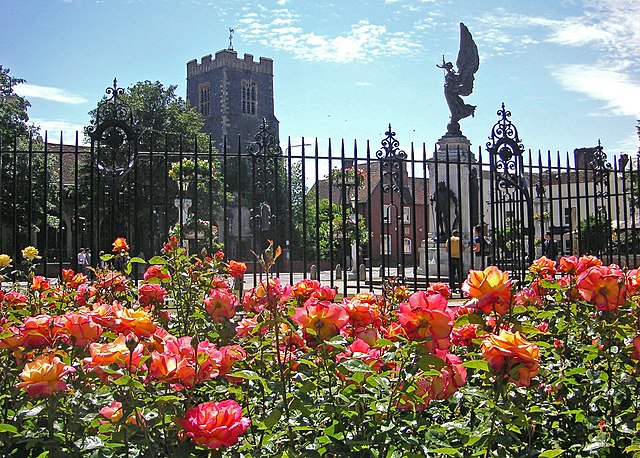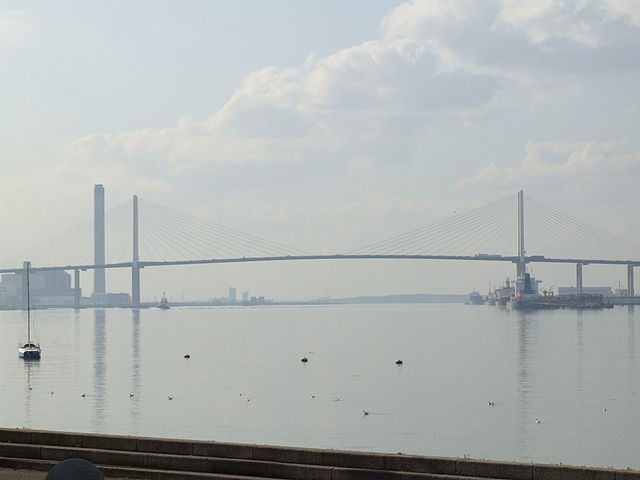Hadleigh Castle is a ruined fortification in the English county of Essex, overlooking the Thames Estuary from south of the town of Hadleigh. Built after 1215 during the reign of Henry III by Hubert de Burgh, the castle was surrounded by parkland and had an important economic and defensive role. The castle was significantly expanded and remodelled by Edward III, who turned it into a grander property, designed to defend against a potential French attack, as well as to provide the King with a convenient private residence close to London. Built on a soft hill of London clay, the castle has often been subject to subsidence; this, combined with the sale of its stonework in the 16th century, has led to it now being ruined. The remains are now preserved by English Heritage and protected under UK law as a Grade I listed building and scheduled monument.
Aerial view of Hadleigh Castle from the north, with the Thames Estuary in the background
Hadleigh Castle by Henry Bright, Beecroft Art Gallery
The towers, royal lodgings and remaining walls as seen from the south in an engraving of 1783, after Francis Grose
Hadleigh Castle, The Mouth of the Thames - Morning after a Stormy Night by John Constable, 1829
Essex is a ceremonial county in the East of England, and one of the home counties. It is bordered by Cambridgeshire and Suffolk to the north, the North Sea to the east, Kent across the Thames Estuary to the south, Greater London to the south-west, and Hertfordshire to the west. The largest settlement is Southend-on-Sea, and the county town is Chelmsford.
St Peters Chapel, Bradwell. Established by St Cedd, the patron saint of Essex around 662, built on the site of the abandonded Roman fort of Othona
Hedingham Castle, The Norman keep from the other side of the English landscape garden
Colchester occupies the site of Camulodunum, the first major city in Roman Britain and its first capital. Colchester claims to be Britain's first city.
Queen Elizabeth II Bridge spanning the Thames from West Thurrock, Essex, to Dartford, Kent








